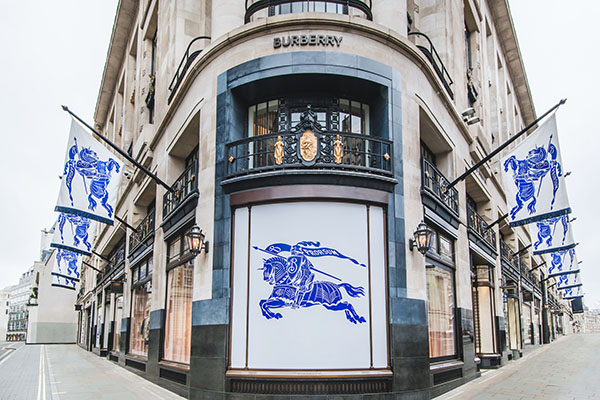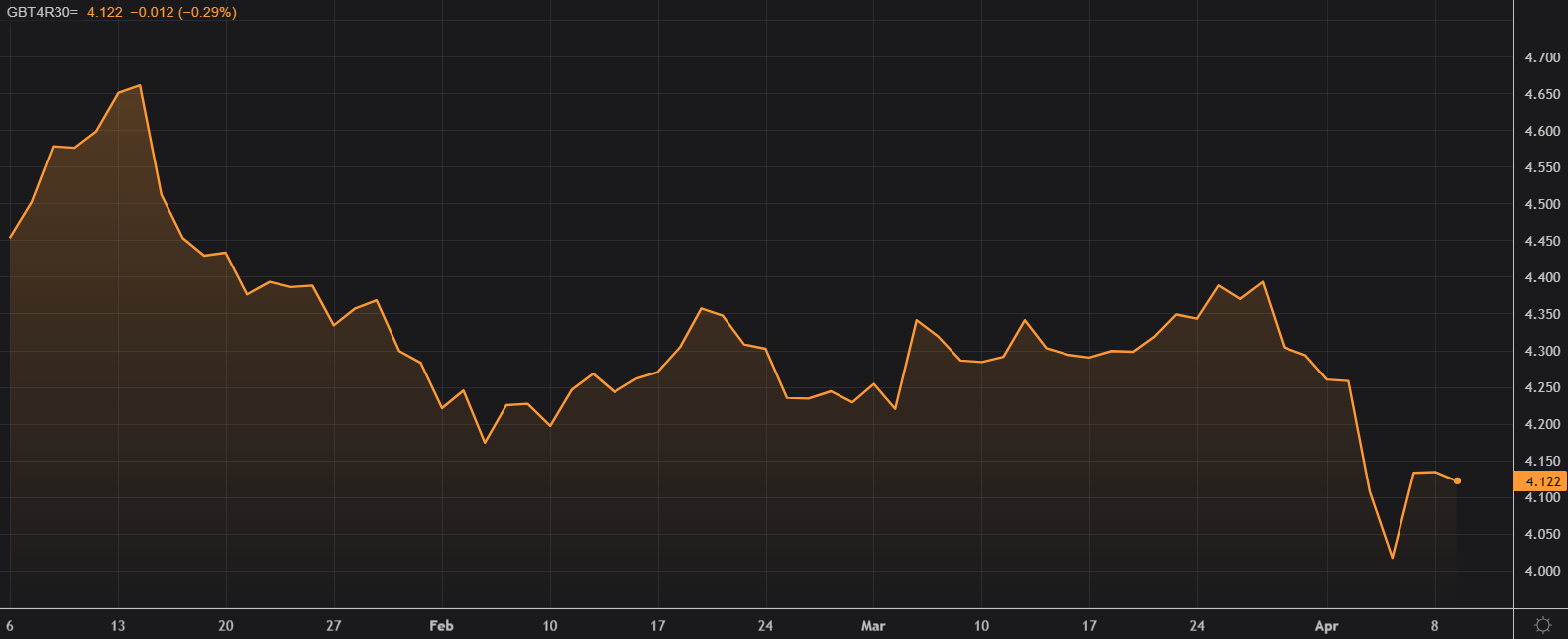Anatomy of a stock market crash and playbook for the recovery
Uncertainty breeds volatility, and the fast-evolving story around US tariffs is keeping investors on their toes. Analyst John Ficenec explains which sectors and stocks remain vulnerable, how this trade war might play out, and some cheap stocks.
9th April 2025 09:55
by John Ficenec from interactive investor

Investors are nursing painful losses after a bruising few days for global stock markets but falling prices also present opportunity. We’ve built a cheat sheet to see which sectors are selling off and why, and more importantly look forward to likely government responses and provide a playbook for investors who want to profit from the turmoil with some bargain ideas for investment returns.
- Invest with ii: Share Dealing with ii | Open a Stocks & Shares ISA | Our Investment Accounts
Tale of a tariff tantrum
Shares have responded depending on how exposed they are to a drop in trade, and their ability to respond to the change in the global economy. Banking shares are high risk through the small amount of equity sitting on top of a massive loan book, so they are among the hardest hit, while miners and oil & gas lost out because it’s difficult for them to respond quickly to lower demand.
Chemicals, Industrial and Technology sectors suffered because tariffs increase costs on the millions of interconnected parts they need every day. It’s not all doom and gloom though, the essentials such as utilities, food, medicine, and household products offer some shelter from the worst of the price falls.
- Stockwatch: Buffett, Trump, China and trading tactics
- Trump tariffs create this potential buying opportunity
- Bear markets: what, why and how
With this in mind, let’s look at what’s driving prices across the sectors.
Banking on a downturn
It is no surprise that banking shares are some of those that have fallen hardest because they are a leveraged play on the global economy. A share in a bank, or the shareholders equity, sits on top of a much larger mountain of loans and mortgages to customers. When times are good and interest rates rise the bank can charge more for lending, and borrowers repay their loans on time and in full. But during a downturn or recession when rates fall and the economy wobbles, repayments get delayed, or even stop completely, and that has a devastating impact on the profits and value of the shares.
Take Lloyds Banking Group (LSE:LLOY), for example, the market value, or shareholders equity of around £39 billion, sits on top of all the banks risk assets of £611 billion, of which mortgages form about half the total, according to the latest annual report. Now, last year things were going OK, so they only needed to make an impairment of £456 million on bad loans and other provisions, leaving a profit before tax of £4.7 billion for 2024. But it only takes around a 5% downturn in risk assets to wipe out the shareholders equity.
In 2020 during Covid when things weren’t so great, the impairment on bad debts was £4.2 billion, almost all last year’s profits. Things were so bad in 2009 the government had to take a 43% stake in the bank to prop it up and only sold this down in 2017. The government still holds around 9% in NatWest Group (LSE:NWG) shares, another bank it had to bailout during the credit crunch.
Luxury loses its shine
The next sector in the firing line is luxury goods, or consumer discretionary, the problem being that when you’re worried about keeping your job, suddenly the new pair of sunglasses, suit, or bag don’t seem so essential.
The other issue is that they are often made in Asia and a 20% tariff on a £500 bag, is a lot more painful than 20% on a £2 ice cream, you’re likely to do without one while still treating yourself to the other. So, shares in the Britpack of Mulberry Group (LSE:MUL), Burberry Group (LSE:BRBY), and Watches of Switzerland Group (LSE:WOSG) have all sold off, while US preppy clothier Ralph Lauren Corp Class A (NYSE:RL) and premium cookware and home furnishings retailer Williams-Sonoma Inc (NYSE:WSM) have also suffered.

Turning round the tanker
Oil and gas companies such as BP (LSE:BP.) and Shell (LSE:SHEL) suffer because not only does the demand for oil fall as global trade slows during a recession, but the price they can sell it for also falls sharply as production is difficult to just shut down. We saw this when oil prices plunged in 2008, and again in 2015 as China slowed and US shale created a supply glut, and more recently in 2020 when Covid shut down travel and trade.
- Insider: big director deals at Glencore, Diageo and Vistry
- Sign up to our free newsletter for investment ideas, latest news and award-winning analysis
It is expensive to explore, drill for and refine oil, with the break-even price thought to be around $40-55 per barrel, which is painful when prices sink to the current level around $65. BP has fallen more than Shell because of the two oil majors BP is perceived as being more unstable - it has just announced its chair is leaving and the restructuring strategy is being questioned by activist investor Elliott, whereas Shell is perceived as relatively more stable. In America, the share price response of Chevron Corp (NYSE:CVX) and Exxon Mobil Corp (NYSE:XOM) was largely the same.
It's a very similar story for miners; they get a double whammy of falling demand and prices sliding during any economic slowdown. Mines take years to get up and running and cannot be easily stopped or slowed, so in a way as a company they are just lashed to the mast and must ride it out with a fixed cost base and falling income. The difference between the miners is down to stability of the underlying company. So Anglo American (LSE:AAL), which is currently undergoing a major restructuring selling off Australian coal production and rumoured to be selling diamond miner De Beers, has dropped more than Rio Tinto Ordinary Shares (LSE:RIO).
Spanner in the works
Other big fallers in the UK have been industrials involved in transportation, engineering, and aerospace and defence. These companies have incredibly complex supply chains importing millions of parts from across the world to assemble in the UK, and they are now facing rising prices, disrupted supply chains and slowing demand. Melrose Industries (LSE:MRO), the aerospace parts maker, was particularly hard hit along with jet engine maker Rolls-Royce Holdings (LSE:RR.), and industrial technology group Smiths Group (LSE:SMIN).
In a similar vein the hyper-connected technology companies have been in the eye of the storm. Taking a smartphone as an example, the microchips were probably designed in the UK by ARM Holdings ADR (NASDAQ:ARM), manufactured in China, using rare earth minerals mined in Australia, then finally all assembled at a factory in China before being shipped back west. We don’t have too many large, listed tech firms left in the UK but in the US hard drive maker Seagate Technology Holdings (NASDAQ:STX), computer manufacturers Dell Technologies Inc Ordinary Shares - Class C (NYSE:DELL) and HP Inc (NYSE:HPQ), along with tech hardware giant Hewlett Packard Enterprise Co (NYSE:HPE), suffered substantial losses.
Performance (%) | |||||||
Rank | FTSE 350 sector performance | Price | 3-7 April crash | 8 April rebound | One-month | Year-to-date | 2024 |
1 | Personal Goods | 10,403 | -18.0 | 4.2 | -30.1 | -33.7 | -27.7 |
2 | Oil & Gas Producers | 7,449 | -16.1 | 1.1 | -8.8 | -5.8 | -7.9 |
3 | Banks | 4,862 | -15.5 | 1.3 | -14.1 | -1.5 | 34.0 |
4 | Industrial Metals & Mining | 4,625 | -13.4 | 1.4 | -19.2 | -20.6 | -14.6 |
5 | Industrial Engineering | 10,725 | -13.1 | 3.8 | -19.5 | -13.0 | -13.3 |
6 | Support Services | 9,498 | -13.1 | 4.5 | -10.5 | -10.0 | -0.1 |
7 | Life Insurance | 5,854 | -13.1 | 3.3 | -4.9 | 6.3 | -11.8 |
8 | Electronic & Electrical Equipment | 8,714 | -12.3 | 3.3 | -14.1 | -13.4 | 1.1 |
9 | General Financial | 16,931 | -11.8 | 5.3 | 0.2 | -3.5 | 20.0 |
10 | Media | 11,479 | -11.6 | 2.5 | -9.7 | -10.7 | 15.3 |
Source: ShareScope.
On the defensive
Everything has fallen in the sell-off, but some have fallen more than others. The companies that have been insulated to some extent are those peddling household essentials. What bills can you not avoid paying? Other than the dreaded council tax, every house needs water, electricity and gas, hence why in the early sell-off the UK utilities such as National Grid (LSE:NG.), Severn Trent (LSE:SVT), British Gas owner Centrica (LSE:CNA), and SSE (LSE:SSE) had one of their best days for a long time.
If you get ill, or have a lifelong condition, you’ll need medicine, and that’s why pharma groups AstraZeneca (LSE:AZN) and GSK (LSE:GSK) in the UK fared better, while in the US Johnson & Johnson (NYSE:JNJ), Pfizer Inc (NYSE:PFE), AbbVie Inc (NYSE:ABBV) and Merck & Co Inc (NYSE:MRK) outperformed the hardest-hit sectors.
- Stockwatch: four defensive shares to consider amid market wreckage
- The Income Investor: FTSE 100 income appeal amid the chaos
If you’re addicted to something, then it’s an essential, and that’s why tobacco groups are classic defensive shares. Imperial Brands (LSE:IMB) and British American Tobacco (LSE:BATS) in the UK managed to withstand the worst falls last week and that performance was mirrored in the US by Marlboro maker Altria Group Inc (NYSE:MO), formerly Philip Morris.
Everyone has to eat no matter what happens in the global economy, so the big supermarket groups Sainsbury (J) (LSE:SBRY), Tesco (LSE:TSCO), and Marks & Spencer Group (LSE:MKS) did relatively well after the tariff announcement rocked markets. We still need to do the washing, clean the house and have a shower, and to cheer ourselves up we’ll still have some chocolate and an ice cream, and that’s why so-called fast moving consumer goods groups like, Dove, Persil and Magnum maker Unilever (LSE:ULVR) did well in the UK, while Pringles, Pampers and Ariel maker Procter & Gamble Co (NYSE:PG) in the US was pretty solid too.
Playbook for the market response
So, that’s the anatomy of a sell-off, but what is the playbook for the market response? It may have been tariffs that got us into this mess, but that seems to be confusing the symptoms with the cause. The bigger problem is a slowing global economy and the fact that the world’s two biggest powers are now at loggerheads and fighting to retain control of what’s left.
The latest round of tariffs is nothing new. Back in 2016 during his first run at the presidency Trump accused China of “raping” the US with unfair trade policy. Given the long running nature of the ambivalence between China and the US and Trump’s most recent comments that America needs to take its medicine, and that he could also increase tariffs further, it looks like we’re in for the long haul. China responded more strongly than expected by matching the US tariffs, signalling that it wasn’t willing to concede any ground.
- When markets fall, here’s what to avoid doing
- Shares for the future: here’s how I rank this simple AIM stock
Two world powers trashing world trade while the global economy is already slowing seems - should it continue - to almost certainly mean recession. In recent years government response to any downturn has taken on a familiar flavour, namely firing up the printing presses and slashing interest rates. A 0.25% cut in the UK next month is almost guaranteed, with ex-Bank of England deputy governor Charlie Bean calling for a 0.5% cut. Either way, most experts predict rates to be 0.75% lower by the end of the year. This would give the Labour government some breathing space on the budget through a lower cost of borrowing.
Cheaper money
The market sell-off has caused a stampede into the safety of government bonds, and this in turn has driven down bond yields. In January of this year UK five-year gilts peaked at 4.6% but have since fallen to around 4.1%. Every 1% fall in gilt yields saves the government around £21 billion in interest repayments over a five-year period according to Office for Budget Responsibility (OBR) estimates.

Source: Refinitiv Eikon on 8 April 2025. Five-year UK Gilt.
Prime Minister Keir Starmer has echoed former European Central Bank President Mario Draghi by saying he will do “whatever is necessary” to protect the UK economy. Starmer has also talked about rethinking economic policy to respond to the new world trade order. An increasing package of spending to support growth should be incoming.
So, where will that money go? Well, a fair proportion could be earmarked for income support and other benefits for workers while the economy slows. This should bolster household finances, helping supermarkets Tesco, Sainsbury’s and M&S.
Building for Britain at bargain prices
However, one key element of the Labour manifesto was to build 1.5 million homes during the next five years, a level of housebuilding not seen since the 1960s. It’s early days but they’ve already fallen far behind that target. They’ve addressed the shortage of workers with education schemes to train up the next generation of builders, and now they simply need to get building on an unprecedented scale.
Investors can pick up many of the shares across the construction sector at bargain prices. The sector is in a funk, with the S&P residential housebuilding index at its weakest on record and the wider construction PMI limping along at 46.4 for March, where anything below 50 signifies contraction. But there are signs of green shoots, as the PMI had ticked up from 44, a low not seen since Covid shutdowns. Falling interest rates should be a shot in the arm for the sector and the OBR forecasts that household disposable income should rise above pre-Covid levels later this year or early next.
So, if building activity picked up sufficiently, the doers and the makers might do well. There are the listed brick makers Forterra (LSE:FORT) and Ibstock (LSE:IBST), or a smaller option in Michelmersh Brick Holdings (LSE:MBH). Paving supplier Marshalls (LSE:MSLH) has suffered, with shares down over 60% during the past three years, so it’s coming off a low base. To build anything you need a lot of sand, cement and gravel so aggregates group Breedon Group (LSE:BREE)that is up over 20% since it moved from AIM to the main market two years ago is grabbing attention.
Some of the bigger infrastructure construction groups such as Morgan Sindall Group (LSE:MGNS) and Galliford Try Holdings (LSE:GFRD) have more than doubled during the past three years, and ground works specialist Keller Group (LSE:KLR) is up over 70% during the same period, although has struggled in recent months. There is also galvanised road crash barrier maker Hill & Smith (LSE:HILS), which could benefit from repairing Britain’s roads. Building uses a lot of timber so Latham (James) (LSE:LTHM) should also benefit if activity improves, then you’ll need a lot of screws and nails, so Screwfix owner Kingfisher (LSE:KGF) might hope for a lift.
Finally, there is the more DIY and home improvement focused end of the market, with Topps Tiles (LSE:TPT) and builders merchant Wickes Group (LSE:WIX), or kitchen specialist Howden Joinery Group (LSE:HWDN). The housebuilders themselves have had a rough time falling sharply from pre-pandemic peaks, and Persimmon (LSE:PSN), Barratt Redrow (LSE:BTRW), Taylor Wimpey (LSE:TW.), Bellway (LSE:BWY) and Berkeley Group Holdings (The) (LSE:BKG) stock are now at more affordable levels.
John Ficenec is a freelance contributor and not a direct employee of interactive investor.
These articles are provided for information purposes only. Occasionally, an opinion about whether to buy or sell a specific investment may be provided by third parties. The content is not intended to be a personal recommendation to buy or sell any financial instrument or product, or to adopt any investment strategy as it is not provided based on an assessment of your investing knowledge and experience, your financial situation or your investment objectives. The value of your investments, and the income derived from them, may go down as well as up. You may not get back all the money that you invest. The investments referred to in this article may not be suitable for all investors, and if in doubt, an investor should seek advice from a qualified investment adviser.
Full performance can be found on the company or index summary page on the interactive investor website. Simply click on the company's or index name highlighted in the article.